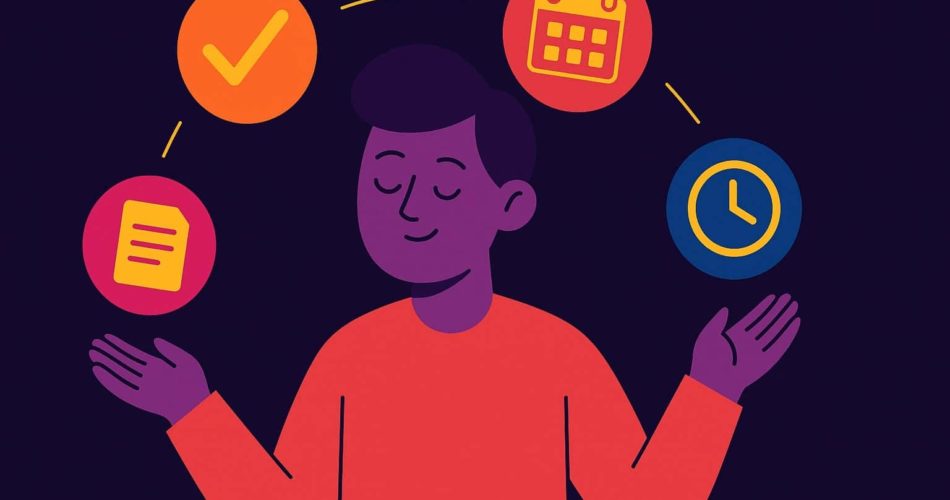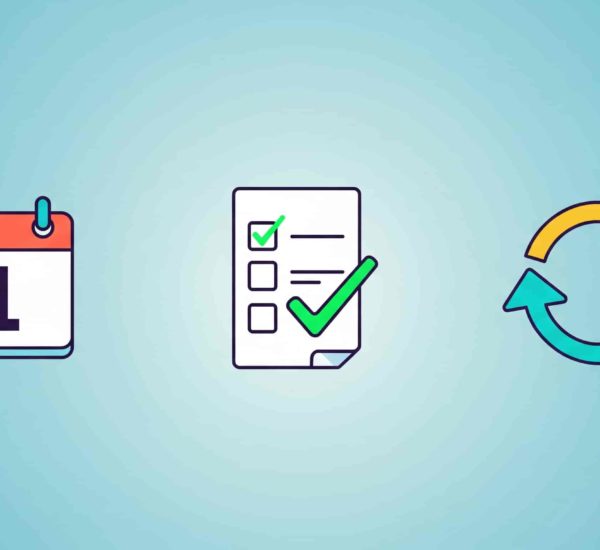If your life feels like a never-ending juggling act—except instead of colorful balls, you’re tossing around client deadlines, team requests, and a few last-minute changes—you’re not alone. Staying organized in a fast-paced environment can feel like trying to catch water with a sieve. But what if there was a way to organize the chaos?
Enter the GTD method. This productivity framework isn’t just a fancy term for “get stuff done”—it’s a powerful approach designed to help you take control of your tasks, prioritize what really matters, and stay on top of everything, no matter how many deadlines are staring you down.
In this post, we’ll break down how you can implement GTD, both for your personal tasks and across your team, so you can tackle any project without feeling like you’re constantly running out of time. Ready to take the stress out of your workday? Let’s dive in!
What is the GTD Method?
The Getting Things Done (GTD) method, created by productivity guru David Allen, is a framework that helps you organize everything in your life—from your to-do lists to your project deadlines—and prioritize tasks without losing your mind. The goal is to get everything out of your head and into a trusted system, so you can focus on what’s most important.
Here’s the beauty of GTD: it’s not just about organizing tasks. It’s about creating a mental space where you’re in control, not your ever-growing to-do list. Think of it like decluttering your mind so you can breathe easier and work smarter.
The method revolves around five key steps:
- Capture: Get everything out of your head and onto paper (or your favorite task manager). No idea, task, or reminder is too small.
- Clarify: Go through what you’ve captured and figure out what needs to be done with each item—whether it’s something you can do right now, delegate, or put on hold.
- Organize: Group tasks into categories, set due dates, and create a clear structure for what needs to be done.
- Reflect: Regularly review your lists and projects to stay on track and adjust your priorities as things change.
- Engage: Take action. Work on tasks based on priority, context, and energy level—no more feeling overwhelmed by a mountain of to-dos.
This method helps create clarity, so you can focus on what truly matters instead of spinning your wheels. And the best part? You can apply it to everything—from personal errands to team-wide projects—so you’ll always know exactly what to do next.

How to Implement the GTD Method: A Step-by-Step Guide
Now that you know the basics, let’s dive into how to implement the GTD method in a way that won’t leave you buried in lists and sticky notes. We’re going to keep it simple, actionable, and maybe even a little fun—because we all need a break from the grind now and then, right?
Step 1: Capture Everything (Yes, Everything)
First things first: get everything out of your head. Every. Single. Thing.
This is where you start with a clean slate. Open up your favorite app (Asana, Trello, Evernote—whatever works for you) or grab a piece of paper, and write down every task, thought, or reminder that’s floating around in your brain. From work projects to personal errands (pick up dry cleaning, anyone?), no task is too small to be captured.
You’ll be amazed at how much mental space you free up just by jotting it all down. And trust us, there’s no judgment here—whether it’s responding to an email or figuring out what to have for lunch, get it all on the page. The goal is to make sure nothing is slipping through the cracks.
Step 2: Clarify What Needs to Be Done
Now that you’ve captured all the things, it’s time to clarify what needs to happen next.
Look at each item you’ve listed and ask yourself:
- Is this something I need to do? If yes, can it be done in two minutes or less? If so, do it now! Seriously, don’t wait. Small tasks like answering quick emails or making a phone call can be handled immediately, saving you time later.
- Can this be delegated? If it’s something you can pass off to someone else (team member, assistant, dog—ok, maybe not the dog), do it. Delegate and move on.
- Is this something to schedule for later? If it’s a task that requires more time, break it down into actionable steps and add it to your calendar or task manager.
By the end of this step, you’ll have a clear understanding of what needs your attention, what can be handed off, and what can be deferred. Think of it as your “to-do list” that’s no longer overwhelming—just organized clarity.
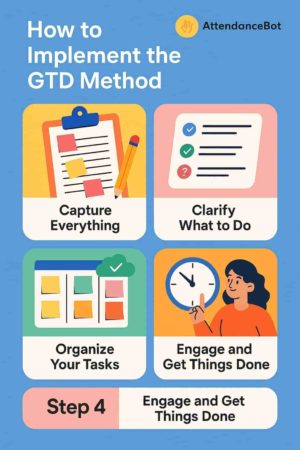
Step 3: Organize Your Tasks
This is where the magic of GTD really starts to shine. You’re going to organize your tasks into manageable categories. We’re talking everything from “Client Campaign Tasks” to “Personal To-Dos” and “Follow-Up Emails.”
Here are a few tips for structuring your tasks:
- Use folders or tags: Whether you’re using a digital tool like Asana or Trello or keeping things analog, make sure each task is grouped by category (e.g., client campaigns, admin tasks, personal errands).
- Set deadlines and priorities: For tasks that have specific deadlines, mark them clearly. Prioritize by urgency or importance to avoid last-minute panic.
- Create checklists: Break down bigger tasks into smaller, manageable steps. For example, if you’re working on a client campaign, break it down into phases like “Initial Briefing,” “Content Creation,” “Approval,” and “Final Review.”
When everything is organized, you’ll be able to quickly see what’s due, what’s in progress, and what can be put off until later. It’s like having a roadmap to your day—no more wandering aimlessly through a sea of tasks!
Step 4: Reflect and Review Regularly
The key to keeping your GTD system effective is to reflect on your progress. Set aside a regular time (weekly works best) to review your lists, projects, and priorities. Check off completed tasks, assess what’s coming up next, and adjust as needed.
Ask yourself:
- What did I accomplish last week?
- What’s coming up that needs attention?
- Are there any changes in project scope or new deadlines to account for?
By regularly reviewing, you’ll stay on top of things, anticipate bottlenecks before they happen, and make sure you’re not blindsided by a last-minute request. It’s your chance to fine-tune your system and keep things moving forward.
Step 5: Engage and Get Things Done
Now comes the fun part—engaging with your tasks and actually getting them done. With everything captured, clarified, and organized, you’ll have a clear roadmap of what to focus on. No more wandering around with a vague list of tasks in your head, wondering what’s most important.
You’ll want to focus on your tasks based on priority, context, and energy level. For example:
- Priority: What’s most urgent? What has a looming deadline?
- Context: What tools or resources do you need? Can you do something while waiting for a meeting or while commuting?
- Energy level: Do you have 10 minutes to knock out something small, or do you need a big block of time for something that requires deep focus?
By following this approach, you’ll be knocking tasks off your list with laser focus and maximum efficiency.
The beauty of the GTD method is its adaptability—it works whether you’re managing personal tasks, collaborating with your team, or handling client-facing deadlines. By capturing everything, clarifying what needs to be done, organizing your tasks, reflecting regularly, and engaging with your to-dos, you’ll streamline your workflow, reduce stress, and increase productivity.
Effective Task Management Strategies for the GTD Fanatic
If you’re serious about boosting productivity with GTD, it’s essential to integrate solid task management strategies that keep everything organized and on track. Here are some quick tips:
- The 2-Minute Rule: If a task will take less than two minutes, do it immediately. This helps you clear small tasks quickly and prevents them from building up.
- Prioritize with the Eisenhower Matrix: Use this to decide on urgent vs. important tasks. Focus on what’s both urgent and important, and delegate or defer everything else.
- The Power of “No”: Learn to say “no” to tasks that don’t align with your priorities. If a task doesn’t contribute to your GTD objectives, it can be put on hold or delegated.
- Review and Reflect: End each day by reviewing your tasks and reflecting on your progress. A quick reflection on what you’ve accomplished helps you maintain momentum and clarity for the next day.
- Use daily check-ins to stay aligned: Lightweight tools like AttendanceBot let teams set up quick, async check-ins that align with GTD capture and reflection habits, without adding overhead.
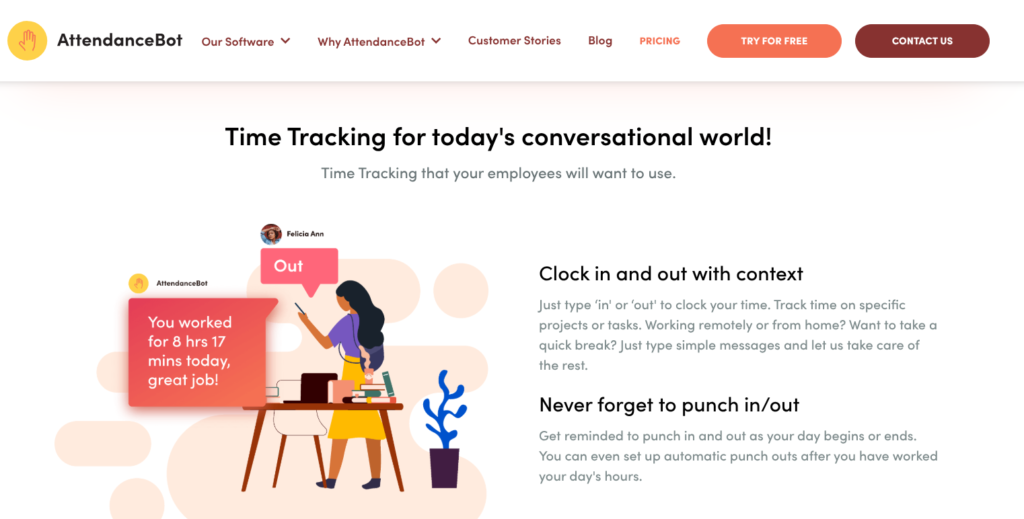
By blending GTD with these task management strategies, you’ll stay organized, efficient, and on top of your game.
Top Productivity Frameworks to Complement Your GTD Approach
To really level up your productivity, pairing the GTD method with other proven productivity frameworks can create a powerhouse of focus and efficiency. Here are a few frameworks that complement GTD perfectly:
- The Pomodoro Technique: If you struggle with staying focused for long periods, try the Pomodoro Technique. Set a timer for 25 minutes to work, followed by a 5-minute break. After four sessions, take a longer break. This boosts productivity by breaking tasks into manageable intervals and giving your brain a chance to recharge.
- Eat That Frog: This framework, inspired by Brian Tracy’s Eat That Frog!, suggests tackling your most difficult or least desirable task first thing in the morning. Once it’s done, the rest of your tasks will feel like a breeze.
- The Ivy Lee Method: Before you finish your workday, write down your six most important tasks for the next day. In the morning, tackle them in order of importance, one by one. This method helps reduce decision fatigue and ensures you’re focusing on what truly matters. Learn more about it here.
- Time Blocking: Allocate specific chunks of time for different types of work—whether it’s client campaigns, internal meetings, or solo tasks. Time blocking ensures you’re spending the right amount of time on the right projects, minimizing distractions, and multitasking. Check out tools for time blocking like Google Calendar or Trello.
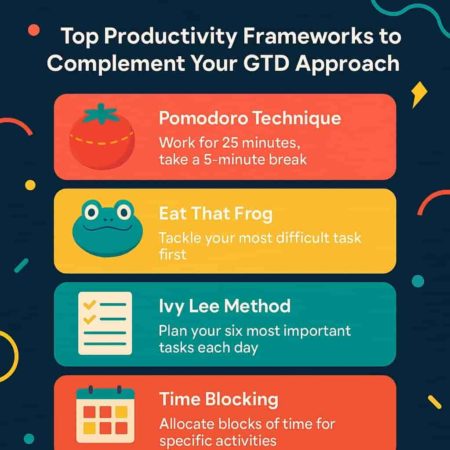 By mixing and matching these productivity frameworks with GTD, you create a tailored system that works for both you and your team, enhancing focus, reducing stress, and ensuring that nothing falls through the cracks.
By mixing and matching these productivity frameworks with GTD, you create a tailored system that works for both you and your team, enhancing focus, reducing stress, and ensuring that nothing falls through the cracks.
Conclusion
With the GTD method and these productivity frameworks in your toolkit, you’re ready to take on any task, project, or deadline that comes your way. Whether you’re breaking down big tasks, staying focused with Pomodoro, or slaying your hardest job first thing in the morning, you’ve got the strategies to keep you on track and stress-free. Now, it’s time to put these methods into action and watch your productivity soar—one task at a time!
